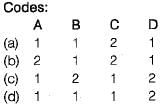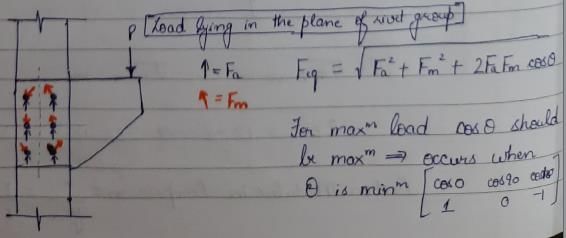Test: Structural Fasteners - 1 - Civil Engineering (CE) MCQ
10 Questions MCQ Test - Test: Structural Fasteners - 1
If the thickness of thinnest outside plate is 10 mm, then the maximum pitch of rivets in tension will be taken as
When the axis of load lies in the plane of rivet group, then the most heavily loaded rivet will be the one which.
where, Fa is the load shared by each rivet due to axial load and Fm is the shearing load due to moment in any rivet
The difference between gross diameter and nominal diameter for the rivets up to 25 mm diameter is
If the thickness of plate to be connected by a rivet is 16 mm, then suitable size of rivet as per Unwin’s formula will be
According to IS Specifications, the maximum pitch of rivets in compression is
(where t is thickness of thinnest outside plate or angle)
Which one of the following is the mode of failure in a fillet weld material?
Match List-I (Failure mode) with List-II (Reason) and select the correct answer using the codes given below the lists:
List-I
A. Shear failure of plates
B. Bearing failure of plates
C. Tearing failure of plates
D. Splitting failure of plates
List-II
1. Insufficient edge distance
2. Strength of plate is less than that of the rivets

The centre to centre maximum distance between bolts in tension member of thickness 10 mm is
The type of stress induced in the foundation bolts fixing a column to its footing is
















